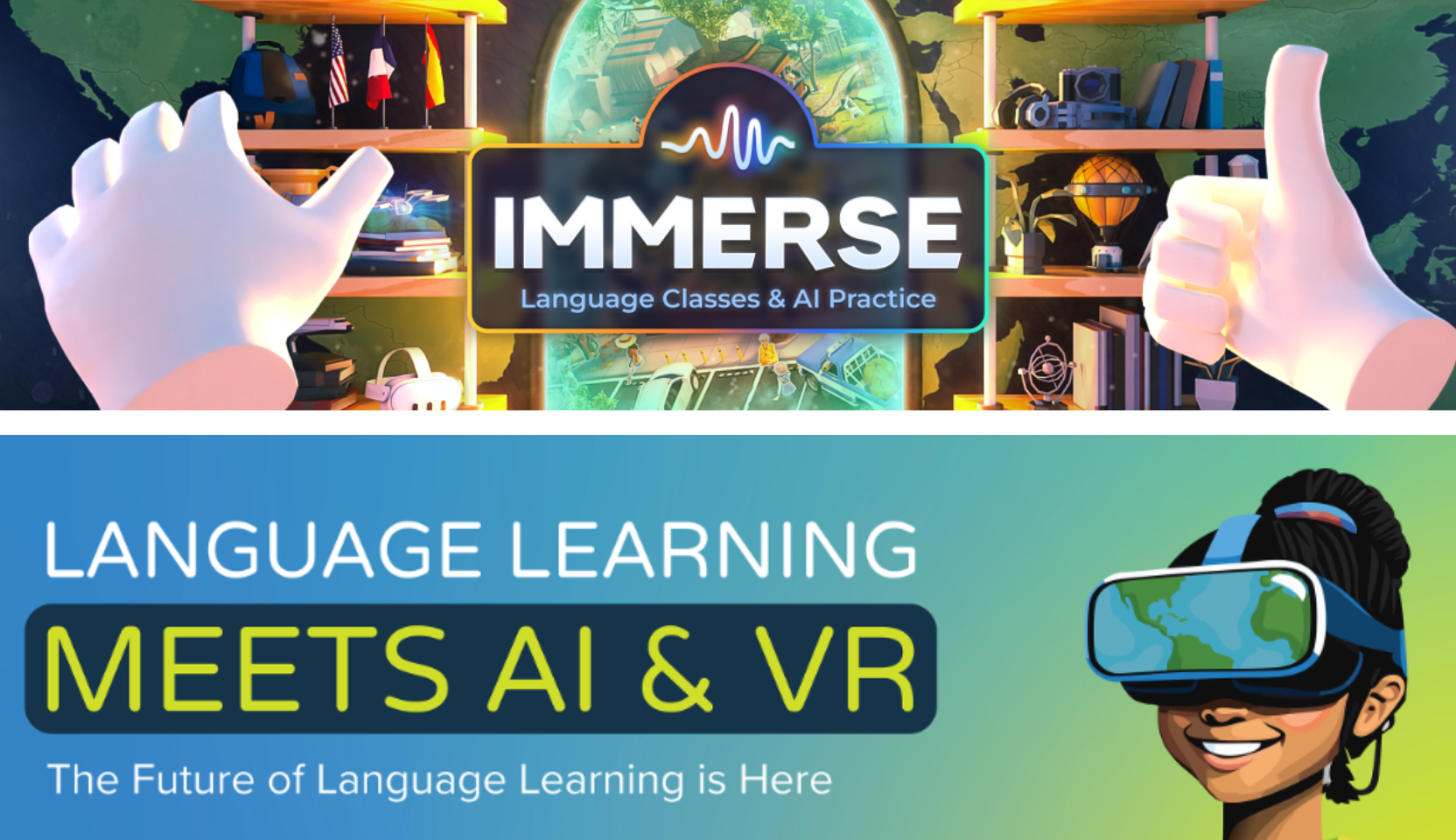Immerse insights:
- A meta-analysis of previous research studies on VR for language learning found that VR had a substantial impact on learners’ language skills and confidence.
- Students who learned using VR technologies had better learning outcomes than those who learned using other methods.
- Using VR was found to be the most beneficial for improving speaking abilities, followed by listening and vocabulary skills.
Over the past few years, language acquisition researchers have conducted a plethora of studies measuring the impact VR has on learning. Many of these studies have been quantitative in nature, meaning they used various assessment methods to collect numerical data on students’ learning outcomes and affective factors like anxiety and motivation.
Although these studies have been helpful in gaining an initial understanding of VR’s impact, they have limitations. The primary limitation is that they have mostly been conducted with a small number of participants. In fact, the average sample size for research studies in language learning is only 22 since research is often conducted in classroom contexts. This makes it difficult to generalize the research findings and make big claims regarding VR’s efficacy.
This is where meta-analyses can be helpful. A meta-analysis is a statistical technique used in research to combine and analyze the results of multiple independent studies on a particular topic. Instead of conducting a new study, researchers gather and analyze data from existing studies to draw more comprehensive and reliable conclusions. This ultimately provides a more robust and reliable assessment of the evidence and helps identify patterns, trends, and the overall impact of a particular intervention (in this case VR).
How was this meta-analysis conducted?
In 2022, Chen et al. conducted a meta-analysis in an attempt to synthesize the findings from smaller studies and quantify VR’s impact on students’ learning and affective gains.
They combed through 569 peer-reviewed research studies that had been published on the topic and determined whether or not they met certain criteria to be included in the meta-analysis (Figure 1).

This process left them with 21 methodologically-sound quantitative research studies that could be analyzed. The total number of participants from all of these studies was 1144. 563 of these were part of experimental groups who used VR for learning and 581 were part of control groups who learned via more traditional methods (e.g., in a classroom).
Using the data from these studies, the researchers were able to calculate effect sizes of VR’s impact on learners’ linguistic and affective gains. An effect size is a statistical measure that quantifies the strength of a relationship in a research study. It provides a standardized way to express the size of an intervention, making it easier to compare results across different studies, which is particularly useful for meta-analyses. In general, a larger effect size indicates a more substantial impact. In this specific meta-analysis, the researchers used an effect size called Cohen’s d, which can be interpreted as follows:
- ≤ 0.2 = small effect
- 0.2 - 0.8 = medium effect
- ≥ 0.8 = large effect
What did the researchers find?
The analysis revealed that VR had an overall medium effect on both linguistic (d = .662) and affective (d = .570) gains and that students who learned using VR technologies had better learning outcomes than those who learned using other methods (d = .840, large effect).
However, the researchers also broke this down to get a more nuanced understanding of the effect VR has on the development of specific skills (e.g., vocabulary, speaking). What they found was that the effect size was largest for speaking skills (d = 1.032, large effect), followed by listening (d = .850, large effect), and vocabulary (d = .761, large-to-medium effect). On the other hand, the effect size was smallest for writing (d = .319). This aligns with research conducted by Immerse’s own university research partners, who have shown that VR can improve students’ speaking, listening, and vocabulary skills.
To quote the researchers,
“these findings provided solid evidence for the advantages of [using] VR devices in language learning” (p. 9).
What makes VR so beneficial for language learning?
This meta-analysis is one of several showing VR improves learning more than traditional methods (see also Dhimolea et al. (2022), Coban et al. (2022), & Huang et al. (2021)).
Researchers have identified several reasons for why learning languages through VR is so helpful.
One reason VR is so beneficial is that it allows for embodied, contextualized learning that helps students better learn and retain new information. Students are also able to improve their language skills through authentic interactions with others, both learners and AI-bots, in VR. And since learners are represented by avatars in these virtual spaces, they typically experience less anxiety and are more willing to attempt to speak the language they are learning, which is key to building fluency.

What makes VR so beneficial for language learning?
Immerse is a virtual world designed specifically to take advantage of these benefits of VR.
To learn more about the research on the effectiveness of VR and Immerse for language learning generally, please visit the Immerse Research page. And if you’re curious to give Immerse a try for yourself, you can sign up for a 14-day free trial.
Research Source:
Chen, B., Wang, Y., & Wang, L. (2022). The effects of virtual reality-assisted language learning: A meta-analysis. Sustainability, 14, 3147. https://doi.org/10.3390/su14053147

Tricia Thrasher






.png)




